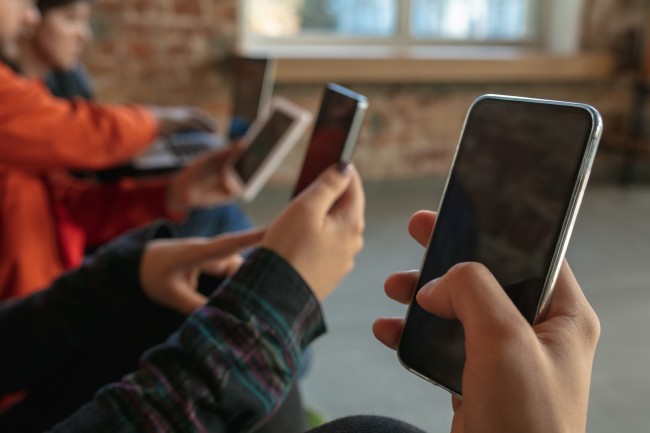Mobile phones changed the way people communicate. They brought the world closer. Today, almost everyone carries one. People use them to talk, text, browse, and work. Phones offer entertainment, education, and social connections.
But they also create challenges. Excessive use affects mental health, privacy, and relationships.
Technology moves fast. New models arrive every year with better cameras, faster processors, and new features. But are mobile phones always beneficial? That depends on how people use them. Let’s explore the advantages and disadvantages of Smartphones.
Advantages of Mobile Phones
1. Instant Communication
People no longer need to wait for letters or emails. Calls and texts happen instantly. Video calls let families and friends connect across the globe. Businesses rely on phones to communicate with clients and employees.
Apps like WhatsApp, Telegram, and Zoom make communication even faster. Companies use them for meetings, collaboration, and customer service. Quick responses improve efficiency.
In emergencies, phones become lifesavers. People call for help during accidents, natural disasters, or medical crises. Emergency services rely on mobile networks to coordinate rescue operations.
2. Access to Information
The internet changed everything. Phones give users access to knowledge in seconds. Search engines answer questions. News apps keep people updated. Educational platforms offer free and paid courses.
Students use phones to research and learn. They watch tutorials, read articles, and join virtual classrooms. Professionals stay updated with industry trends. Even entertainment relies on real-time information.
Navigation apps guide travelers. Google Maps, Waze, and Apple Maps provide directions, traffic updates, and public transport routes. People no longer get lost in unfamiliar places.
3. Productivity and Work
Mobile phones help businesses grow. Employees use them for emails, video calls, and project management. Apps like Slack, Asana, and Trello organize tasks. Cloud storage lets users access documents from anywhere.
Freelancers and remote workers depend on mobile devices. They attend meetings, send invoices, and manage clients through their phones. Even traditional businesses use mobile apps for customer service, sales, and marketing.
Digital payments made transactions easier. Mobile wallets like Apple Pay, Google Pay, and PayPal let people shop without carrying cash. Contactless payments improve security and convenience.
4. Social Connections and Entertainment
Social media platforms connect people. Facebook, Instagram, Twitter, and TikTok keep users engaged. People share updates, follow trends, and interact with others worldwide.
Streaming services changed entertainment. YouTube, Netflix, and Spotify offer endless content. Gamers enjoy mobile-friendly titles like PUBG, Call of Duty, and Genshin Impact. Phones also serve as digital cameras, replacing bulky DSLRs for casual photography.
Online communities bring like-minded individuals together. Forums, groups, and live streams create conversations and friendships. Phones bridge gaps between cultures and generations.
5. Safety and Security
GPS tracking helps locate lost phones. Parents monitor their children’s whereabouts through location-sharing apps. Security cameras link to mobile devices, letting homeowners check their property remotely.
Authentication apps protect accounts. Two-factor authentication prevents hackers from accessing sensitive data. Encryption secures messages and calls. Phones store important documents, passwords, and banking details safely.
Governments and organizations send emergency alerts through mobile networks. Natural disaster warnings, health advisories, and missing person notifications spread quickly. People stay informed and prepared.
6. Mobile Banking and E-Commerce
Phones revolutionized banking. Users check balances, transfer money, and pay bills online. Banking apps provide security features like biometric authentication and fraud alerts.
E-commerce platforms make shopping easier. People order groceries, clothes, and electronics with a few taps. Sellers reach global customers without needing a physical store.
7. Digital Health and Fitness
Health tracking apps help users stay fit. Smartwatches and fitness bands sync with phones to monitor steps, heart rate, and sleep patterns. Telemedicine apps let patients consult doctors remotely.
Mental health apps guide meditation, stress relief, and therapy sessions. People improve well-being without visiting a clinic.
8. Language Learning and Translation
Phones remove language barriers. Apps like Duolingo, Google Translate, and Babbel help users learn new languages. Real-time translation features assist travelers and professionals in multilingual conversations.
Business meetings and social interactions become smoother when people understand different languages. Phones enhance global communication.
9. Smart Home Integration
Mobile phones act as remote controls for smart homes. Users adjust thermostats, turn lights on and off, and manage security cameras from anywhere. Voice assistants like Siri, Google Assistant, and Alexa respond to commands.
Smart home technology improves convenience and energy efficiency. Mobile phones serve as central hubs for connected devices.
10. Personal Development and Hobbies
Phones encourage skill-building. Users access online courses, listen to audiobooks, and watch instructional videos. Whether learning an instrument, cooking, or coding, mobile devices provide resources.
Digital libraries offer thousands of books. Reading apps keep users engaged without carrying physical copies. Phones make lifelong learning easier.
Disadvantages of Mobile Phones

1. Health Risks and Addiction
Phone addiction disrupts sleep, reduces focus, and increases anxiety. Excessive screen time causes headaches, neck pain, and eye strain. Studies link prolonged use to poor posture and weight gain.
Blue light exposure interferes with melatonin production. Many users struggle to fall asleep after scrolling at night. Social media comparison leads to stress and insecurity, affecting mental health.
Nomophobia—the fear of being without a phone—creates dependency. Many people panic if they forget their device at home or lose internet access.
2. Privacy and Security Concerns
Smartphones track locations, habits, and conversations. Apps collect data for advertising, often without user consent. Hackers exploit security flaws to steal banking information and personal details.
Phishing scams and malware infect devices through fake links and unsecured networks. Public Wi-Fi poses risks, allowing cybercriminals to intercept sensitive data. Users must remain cautious when sharing personal information online.
3. Distraction and Reduced Productivity
Frequent notifications break concentration. People check social media, emails, and messages while working or studying. Multitasking lowers efficiency and causes mental fatigue.
Smartphones distract drivers, leading to accidents. Laws exist to prevent texting while driving, yet many ignore them. Students lose focus in classrooms, affecting academic performance.
4. Environmental Impact
Smartphone production depletes natural resources. Mining rare earth metals for batteries and components harms ecosystems. Factories release pollutants, increasing carbon footprints.
E-waste grows as people replace phones frequently. Many discarded devices end up in landfills, leaking toxic chemicals. Recycling programs exist, but few users participate.
5. Social Disconnection and Fake Information
Phones connect people digitally but isolate them in real life. Families eat meals in silence, lost in their screens. Conversations become shorter, replaced by emojis and short replies.
Fake news spreads rapidly on social media. Misinformation influences elections, public health, and opinions. Users must verify sources before believing or sharing content.
6. Cyberbullying and Online Harassment
Social media exposes users to cyberbullying. Anonymous trolls spread hate, targeting individuals. Victims face emotional distress, depression, and self-esteem issues.
Teenagers suffer the most. Many experience online harassment, impacting their confidence and mental well-being. Reporting and blocking features help, but online abuse persists.
7. High Costs of Devices and Data Plans
Smartphones come with a hefty price tag, especially flagship models. Many people spend large amounts on frequent upgrades. Data plans, premium apps, and subscriptions increase monthly expenses.
Families with multiple devices often struggle with high bills. Repair costs are another burden, as cracked screens and battery replacements add up over time.
8. Over-Reliance on Technology and Memory Decline
People rely on smartphones for basic tasks. Navigation apps replace map-reading skills. Phone contacts eliminate the need to remember numbers. Even note-taking apps reduce the practice of writing things down.
Over time, reliance on digital tools weakens memory and problem-solving skills. Dependence on virtual assistants like Siri and Google Assistant limits independent thinking.
9. Workplace and School Disruptions
Mobile phones disrupt workplaces and classrooms. Employees check notifications instead of focusing on tasks. Meetings become less productive when people get distracted by social media.
Schools face challenges as students use phones to chat or browse instead of paying attention to lessons. Many institutions ban phone use during class hours to maintain discipline.
10. Physical Injuries from Excessive Use
Excessive phone use causes health issues. People develop “text neck” from looking down at screens for long periods. Repetitive strain injuries occur from excessive texting and scrolling.
Long hours of gaming lead to poor posture and joint pain. Accidents happen when pedestrians stare at screens while walking. Many suffer from sleep disorders due to prolonged exposure to blue light at night.
Conclusion
Mobile phones offer convenience, knowledge, and connectivity. They also bring challenges like addiction, security risks, and environmental concerns. People must balance usage to enjoy the benefits while avoiding the drawbacks.
Technology evolves. Future smartphones may solve current issues. Until then, responsible usage remains key. Phones should enhance lives, not control them. The choice lies with the user.
Also Read:
